Related Research Articles

Lupinus, commonly known as lupin, lupine, or regionally bluebonnet etc., is a genus of plants in the legume family Fabaceae. The genus includes over 199 species, with centers of diversity in North and South America. Smaller centers occur in North Africa and the Mediterranean. They are widely cultivated, both as a food source and as ornamental plants, but are invasive to some areas.
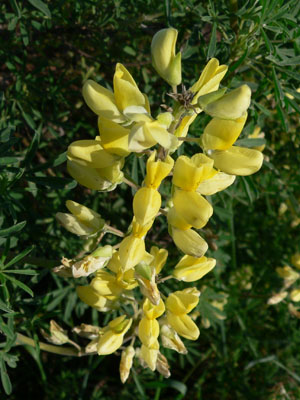
Lupinus arboreus, the yellow bush lupine (US) or tree lupin (UK), is a species of flowering plant in the legume family Fabaceae.
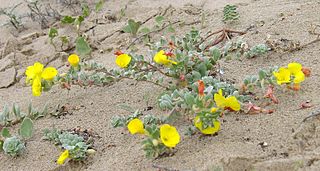
Camissoniopsis cheiranthifolia, the beach suncup or beach evening primrose, is a species of the evening primrose family and is native to open dunes and sandy soils of coastal California, Baja California and Oregon.

Abronia umbellata is a flowering annual plant which is native to western North America. Other common names include beach sand verbena and purple sand verbena.

Apodemia mormo langei, the Lange's metalmark butterfly, is an endangered North American butterfly. It is a subspecies of the Mormon metalmark and belongs to the family Riodinidae. The butterfly is endemic to California, where it is known from one strip of riverbank in the San Francisco Bay Area. A 2008 count estimated the total remaining population at 131 individuals. Since 2011, this number has dropped to about 25–30.
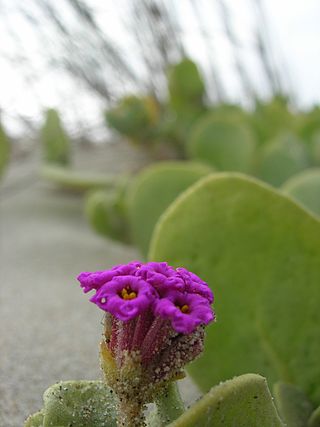
Abronia maritima is a species of sand verbena known by the common name red sand verbena. This is a beach-adapted perennial plant native to the coastlines of southern California, including the Channel Islands, and northern Baja California. It grows along stable sand dunes near, but not in, the ocean surf.

Abronia villosa is a species of sand-verbena known by the common names desert sand-verbena and chaparral sand-verbena. It is in the four o'clock plant family (Nyctaginaceae). It is native to sandy areas in the deserts of the southwestern United States and northern Mexico, associated with creosote-bush and coastal-sage scrub habitats.

Erysimum menziesii is a species of Erysimum known by the common name Menzies' wallflower.

Abronia turbinata is a species of flowering plant in the four o'clock family known by the common name transmontane sand-verbena. It is native to eastern California and Oregon and western Nevada, where it grows in desert and plateau scrub.

Abronia alpina is a rare species of flowering plant in the four o'clock family known by the common names Ramshaw Meadows sand verbena and Ramshaw Meadows abronia. It is endemic to Tulare County, California, where it is known from only one area high in the Sierra Nevada.
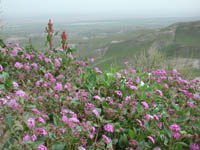
Abronia pogonantha is a species of flowering plant in the four o'clock family (Nyctaginaceae) known by the common name Mojave sand-verbena. It is native to California and Nevada, where it grows in the Mojave Desert, adjacent hills and mountains, and parts of the San Joaquin Valley in the Central Valley.
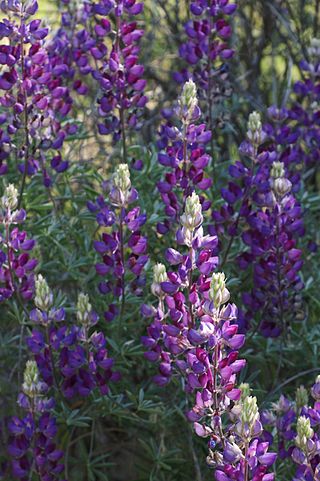
Lupinus albifrons, silver lupine, white-leaf bush lupine, or evergreen lupine, is a species of lupine (lupin). It is native to California and Oregon, where it grows along the coast and in dry and open meadows, prairies and forest clearings. It is a member of several plant communities, including coastal sage scrub, chaparral, northern coastal scrub, foothill woodland, and yellow pine forest.

Lupinus brevicaulis is a species of lupine known by the common names shortstem lupine and sand lupine. It is native to the southwestern United States, including Oregon, California, Nevada, Utah, Colorado, Arizona, and New Mexico, where it grows in many types of sandy habitat.
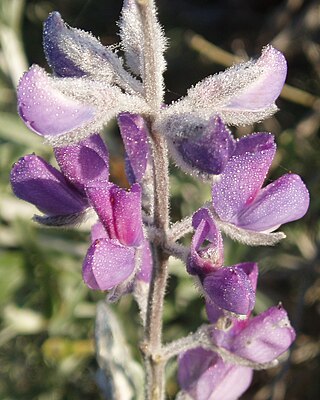
Lupinus chamissonis is a species of lupine known by the common name Chamisso bush lupine. It is endemic to California, where it is known from most of the length of the coastline. It grows in sand dunes and other immediate coastal habitat.
Monardella undulata subsp. crispa, synonym Monardella crispa is a rare subspecies of flowering plant in the mint family known by the common name crisp monardella. It is endemic to California, where it is known only from the sand dunes on the coastline of San Luis Obispo and Santa Barbara Counties.
Monardella frutescens is a rare species of flowering plant in the mint family known by the common name San Luis Obispo monardella.
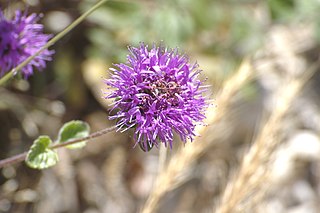
Monardella undulata is an uncommon species of flowering plant in the mint family known by the common name curlyleaf monardella. It is an annual herb and is endemic to the coast of California.
A. maritima may refer to:
References
- Jepson Flora Project: Jepson Online Interchange for California Floristics (The Jepson Herbarium, University of California Berkeley), http://ucjeps.berkeley.edu/interchange.html, 2006.
- Introduction to California Plant Life, Revised Edition, by Robert Ornduff, Phyllis Faber, Todd Keeler-Wolf, ISBN 0-520-23704-8, 2003.
- A Natural History of California, Allan A. Schoenherr, ISBN 0-520-06922-6, 1995.
- The Jepson Manual: Higher Plants of California by James C Hickman, ISBN 0-520-08255-9, 1993.